#common lousewort
Explore tagged Tumblr posts
Photo
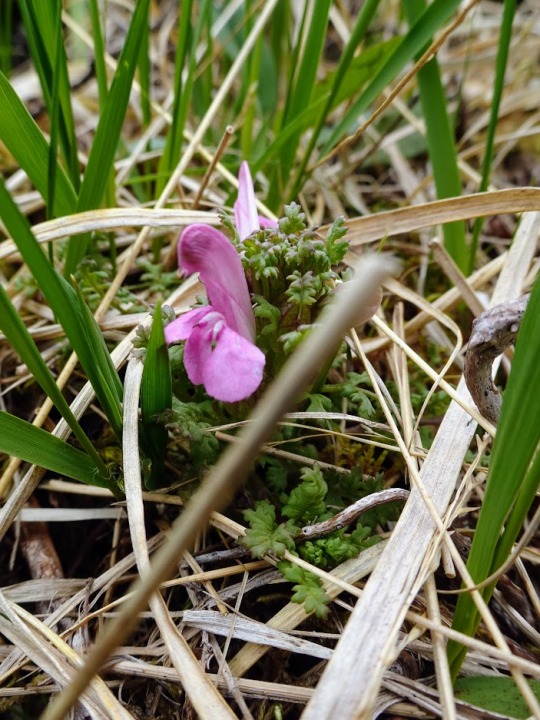
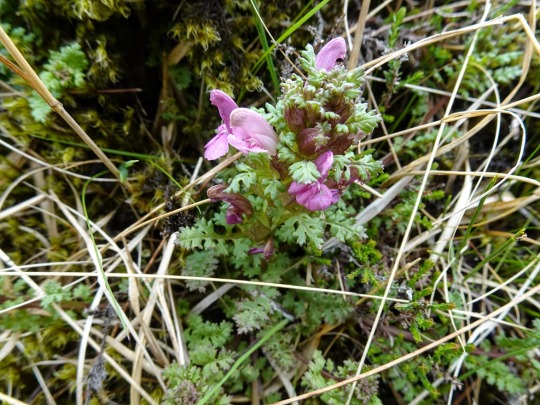
Lousewort, probably Pedicularis sylvatica, below the Steall Waterfall in Glen Nevis. Pedicularis are often found in acidic, nutrient-poor areas. They’re able to do this because they’re hemiparasitic and “steal” nutrients from the roots of neighboring plants, while also doing some photosynthesis of their own.
The common name “lousewort” is derived from a 17th century belief that eating Pedicularis would cause livestock to get lice. This wasn’t entirely silly - as Jim Pojar and Andy MacKinnon point out in their field guide to Pacific Northwest plants, there probably was a correlation between livestock being grazed on nutrient-poor areas where Pedicularis live and the livestock being weak and consequently infested with parasites.
#common lousewort#Pedicularis sylvatica#Steall Waterfall#an steall bàn#plants of Scotland#plants of the United Kingdom#hemiparastic plants#parasitic plants#Pedicularis#orobanchaceae
50 notes
·
View notes
Photo










30th April 2023-Walk from Telegraph Hill in the New Forest towards Eyeworth Pond and home
Pictures taken today in this set: 1 and 2. A beautiful Cuckoo we saw extraordinarily well this afternoon. It was an honour to spend many minutes watching this bird, hearing and seeing it (make the) call that echoed vibrantly across the open landscape, seeing it in trees and on the ground getting a worm at one point these were exquisite views of this bird which fills my heart with joy. It was an absolute pleasure to see it, these were for sure some of my greatest and most prolonged views ever of a Cuckoo in the New Forest the place that allowed me to first see this bird and build my unique bond with this one of my favourite birds. There may have been a second further on in the walk too. This immersive and wholesome Cuckoo experience marked my first seen this year, another cracking bird year tick of late and one of the best things about my beloved spring for me so I was so happy to see it. 3, 4, 8 and 9. Views on this great walk round with it looking nice and green, I’ve never walked from Telegraph Hill the highest point in the New Forest before whilst I have ended up here on Eyeworth Pond walks a lot so this was a nice fresh walk to do for me. 5. My first tormentil of the year a great bright constant of heath floors in spring and summer months and into autumn. 6. A fine male Redstart, I saw my first this year of this New Forest gem today too with a few seen. We got brilliant views of these sumptuous beauties as well to take my year list to 196 which I am stunned by it’s been a top birdwatching weekend for us. 7. Fallow Deers, we got some special close encounters with these marvelous mammals today watching them in the undergrowth and bounding across the heath. 10. One of a few House Sparrows I enjoyed in the back garden before going out.
It was also great to see Buzzard and Skylark in the air, Stonechat, Wheatear, Meadow Pipit, Chaffinch, Blue Tit, Goldfinch, New Forest Pony and my first ever Common Heath moth my first identified moth of the year a dazzling moth flitting over the heath on the walk. There was a sweet array of flowers on the walk too with bright pink lousewort and charming milkwort other firsts for the year for me and violet, gorse, possible willow and mint leaves. Wren was nice to hear. At home today I also enjoyed Magpie and close views of Collared Dove, Woodpigeon and Goldfinch and on the way it was amazing to see two Buzzards from the car mating/attempting to in a tree. Something of a theme of bird of prey sightings I’ve had this month.
#common heath moth#cuckoo#redstart#photography#birdwatching#world#happy#earth#nature#moths#flower#flowers#gorse#lousewort#tormentil#milkwort#spring#new forest#woodpigeon#buzzard#blue tit#uk#skylark#outdoors#bank holiday#bank holiday weekend#april#2023#europe#plants
1 note
·
View note
Note
So what kinds of food would Aang and other Air Nomads be able to eat during visits to the Water Tribes? Assuming that their brand of vegetarianism allows for animal products like milk and eggs, but no fish or animal fat or anything that would involve killing a living creature.
Naturally, some of these will be seasonal, but this really depends on if you want only pre-contact circumpolar ingredients and cooking methods
If you want some inspiration from purely traditional foods, and can imagine a way they'd collect unfertilized fish eggs:
Wild bird (ptarmigan, grouse, corromant, etc) eggs, raw or boiled. Chicken broth could be replaced with a tea of birch bark, fireweed leaves, or tundra tea leaves to make something similar to an egg drop soup.
Roots like those of masru/eskimo potato and wooly lousewort, raw, boiled, or roasted. Could be fried in theory, but as the only fats available would be attached to animal flesh, this would violate vegetarian dietary restrictions.
Fish roe (eggs) on their own or ground up and whipped into akutaq.
Greens like sourdock, mountain sorrel, and wild celery, dressed in unsweetened syrups of fireweed blossoms or berries instead of the traditional seal oil.
Berries such as wild cranberries (lowbush and highbush), blueberries, cloudberries, wild raspberries, and crowberries, fresh or as jam (unsweetend and probably unpleasantly messy with nothing to eat it on) or akutaq.
Fireweed shoots, roasted and could be served with unsweetened syrups like the aforementioned fresh greens.
Young puffball mushrooms, eaten but not very commonly from what I can tell
And, of course, what the entire fandom was expecting: seaweed. With the lack of any proper substitutes for sessame oil or garlic, however, i'm not sure you could get something resembling a Korean style seaweed soup.
Now, if you want to include things that would have to be imported and cooking utensils and methods that aren't traditional, then you'll see foods that look a little more familiar.
Traditional foods can be stirfried in woks and served over rice or used for noodle dishes.
Here's where things like hotpot and congee are possible.
Flour can be used for doughs and batters or combined with butter to make pastry for frying in plant based oil or baking in ovens to get things like frybreads, cakes, and pies.
Milk can be added to foraged eggs to make custards which can be flavored with local berries and eddible flowers.
Mushrooms and tea can be used to replace meat broths for hearty soups.
Vegetables like cabage and onions can be added, as can protiens like beans and tofu.
And seasonings like ginger, pepper, garlic. And other ways to alter the flavor like soy sauce and vinegar (which also allows pickling). Sugar means syrups, jams, and akutaq can be sweetened, and now that bread is an option, can be eaten in combination with more foods.
This also has me wondering if other aspects than food would be given special attention to align with Air Nomand customs. Would they light lamps with plant-based oils instead of animal fat? Would they be sure to have utensils carved of wood rather than antler, bone, or ivory? Would it be seen to that sleeping mats be made of woved grass and stuffed with mosses and lichens instead of the typical skins?
Anyway, if you want to browse through common tundra plants and like two fungi and Inupiaq uses for them, check out this site
#response#eskimo on main#helpful hints for non-natives writing for avatar canon as well as fan writers#atla#avatar the last airbender#atla headcanons#let's get all those tags on there so this fandom can be a less stupid place#water tribe
1K notes
·
View notes
Photo

Wildflowers of Eastern Greenland Greenland may not be green, but it the short summer period it explodes with wildflowers. Many bloom for a very short time - weeks or perhaps even days, almost all are small and close to the ground, if not miniature, but all are super showy and bright to attract the few pollinating insects that exist. There were many coming Arctic wildflowers like cottongrass or poppies or various saxifrages, but there were some quite rare finds like the carnivorous butterwort. All in all, there are 25 species collected in this post plus 3 types of berries. I hope it’s one of the more comprehensive lists of the Eastern Greenlandic flora, and my job as a botanist-at-heart is complete and done. The species pictures are Dwarf willow, Arctic cottongrass, Northern common cottongrass, Mountain sorrel, Alpine bistort, Arctic wintergreen, Arctic alpine fleabane White Arctic bellheather, Entireleaf Aven, Mountain aven, Drooping saxiflage, Alpine saxifrage, Tufted saxifrage, Purple saxifrage Yellow mountain saxiflage, Dward fireweed, Arctic mouseear, Moss campion, Arctic campion, Hairy lousewort, Alpine Cinquefoil, Common Butterwort, Showy Pussytoes, Mountain Harebell, Tundra Chickweed, Arctic Mouseear, Mountain crowberry, Bearberry, Bog Blueberry #travel2unlimited #travel #travelblog #arctic #arcticcircle #greenland #eastgreenland #oceanwideexp #expedition @oceanwideexp #flora #wildflowers (at Greenland) https://www.instagram.com/p/CiOip-0j-Rf/?igshid=NGJjMDIxMWI=
#travel2unlimited#travel#travelblog#arctic#arcticcircle#greenland#eastgreenland#oceanwideexp#expedition#flora#wildflowers
2 notes
·
View notes
Photo


Pedicularis canadensis - Canadian Lousewort, or Wood Betony if you’re in North America. If in Europe, betony is a whole different genus (still in Lamiaceae, though).
#plant id#pedicularis#pedicularis canadensis#lamiaceae#wood betony#common names#canadian lousewort#lousewort#forest floor#roan highlands
2 notes
·
View notes
Text
While we’re on it have a list of edible ‘weeds’ that I’ve grown up with not knowing you could eat them- let alone cook them!
agoseris
arrow-leaved balsamroot
arrowhead
asparagus
beargrass
bedstraw (aka cleavers)
bistort
bittercress
bitterroot
bracken
bugleweed
bulrush
burdock
camas (aka blue camas)
catnip
cattail
chickweed
chicory
clover
cocklebur
coltsfoot
common orache
common sweet clover
cow-lily
dandelion
devils club
dock
elephanthead lousewort
false solomon's-seal
fireweed
fleabane
garden orache
goldenrod
ground ivy
high mallow
indian pipe (aka ghost plant)
jerusalem artichoke
knotweed
lamb's quarter (aka pigweed)
mariposa-lily
marsh-marigold
mountain sorrel
musk mallow
mustard
northern water plantain
oxeye daisy
pearly everlasting
pickleweed (aka glasswort, sea asparagus)
pigweed
pineapple-weed
plantain
prairie turnip (aka breadroot)
prickly-pear cactus
queen's cup
quickweed
roseroot
salsify (aka goatsbeard, oyster plant)
sea milkwort (aka sea milkweed)
self heal
sheep sorrel
shepherd's-purse
silver orache
silverweed (aka cinquefoil)
sow thistle
speedwell (aka brooklime, gypsyweed)
stinging nettle
stonecrop
stork's-bill
strawberry-blite
sunflower
swamp hedge-nettle (aka marsh woundwort)
sweet gale (aka bog myrtl)
sweetflag
thistle
violet
watercress
wild bergamot (aka horsemint)
wild licorice
wild mint
wild rose
wood lily
woodsorrel
yellow glacier-lily (aka snow-lily)
yellowcress
3 notes
·
View notes
Quote
Wandering on, they climbed a hill and came to Newtown Common -- a country of peat, gorse and silver birch. After the meadows they had left, this was a strange, forbidding land. Trees, herbage, even the soil -- all were unfamiliar. They hesitated among the thick heather, unable to see more than a few feet ahead. Their fur became soaked with the dew. The ground was broken by rifts and pits of naked black peat, where water lay and sharp white stones, some as big as a pigeon's, some as a rabbit's skull, glimmered in the moonlight. Whenever they reached one of these rifts the rabbits huddled together, waiting for Hazel or Bigwig to climb the further side and find a way forward. Everywhere they came upon beetles, spiders and small lizards which scurried away as they pushed through the fibrous, resistant heather. Once Buckthorn disturbed a snake, and leaped into the air as it whipped between his paws to vanish down a hole at the foot of a birch. The very plants were unknown to them -- pink lousewort with its sprays of hooked flowers, bog asphodel and the thin-stemmed blooms of the sundews, rising above their hairy, fly-catching mouths, all shut fast by night. In this close jungle all was silence. They went more and more slowly, and made long halts in the peat cuts. But if the heather itself was silent, the breeze brought distant night sounds across the open common. A cock crowed. A dog ran barking and a man shouted at it. A little owl called 'Kee-wik, kee-wik' and something -- a vole or a shrew -- gave a sudden squeal. There was not a noise but seemed to tell of danger.
watership down, richard adams
4 notes
·
View notes
Text
Betony

stachy officinalis or betonica officinalis
Betony is also known as; St Brid’s Comb, Stachys betonica, woundwort, common hedge nettle, lousewort, purple betony, bishop wort, bishop’s elder, spiked betony
Betony is a woodland perennial and a member of the mint family with its characteristic square stem and bilabiate flowers. The flowers are lavender in colour and appear in whorls from June through August. The leaves and stems are hairy and fragrant. The plant appears along woodland edges and can reach up to two feet in height. Betony is a European native that has naturalised over much of the United States and is considered a weed in many areas.
History and Folklore
The name betony is said to derive from a Celtic word bewton which means “good for the head”.
The Egyptians regarded betony as a magical herb. A Spanish saying, “He has as many values as betony,” shows the regard that people had for the plant. The Romans listed 47 different medicinal uses for betony and believed that even wild beasts used betony as medicine, and would seek it out when wounded.
A common traditional use for betony was a guard against evil spirits and mischief. During the Middle Ages, it was planted in churchyards and worn in amulets for protection.
Household Use
Makes a chartreuse dye with an alum mordant.
Magical Attributes
Identified with attorlothe of the Nine Herbs Charm, Betony resonates with the energy of the planet Jupiter and the element fire and is masculine in nature.
Betony can be added to any protective mixtures, grown around the home to protect it or carried on the person (especially under one’s hat) to protect from negativity, misfortune, and hexes. Scattered near doors, it prevents unwanted energies (and people) from entering. It has been planted in graveyards to prevent evil spirits from escaping.
Betony can be stuffed into a pillow or placed underneath to prevent nightmares and night terrors.
https://witchipedia.com/book-of-shadows/herblore/betony/
0 notes
Text
If you haven’t already, check out ‘part one’ of this blog post here:

In our first post, we let you know what we’ve been up to and why we’ve been gallivanting about Spain. We introduce the family, Sphingidae, of which today’s organism is a part of. We also talk about our first Sphingid, the hummingbird hawk-moth (Macroglossum stellatarum).
In this post, we want to share with you another beautiful Sphingid, the broad-bordered bee hawk-moth (Hemaris fuciformis).
The Broad-bordered Bee Hawk-moth (Hemaris fuciformis)
The broad-bordered bee hawk-moth is found in north Africa, Europe (except northern Scandinavia) and Central and Eastern Asia. As for the UK, you are most likely to see them from May to August, but they are nationally scarce and are restricted to small areas.

It gets its common name from the fact that it resembles a bumble bee. The hawk-moth, however, is much larger and more agile than their bee-counterpart. The hawk-moth also feeds whilst flying, whilst a bumble bee lands on the flower.

We noticed whilst observing the hummingbird hawk-moth and the broad-bordered bee hawk-moth feeding, that the hummingbird hawk-moth never rests any of its legs on the flower whereas the bee hawk-moth always rests its front two legs. Here is a comparison:
Hummingbird Hawk-moth (Macroglossum stellatarum)
Broad-bordered Bee Hawk-moth (Hemaris fuciformis)
Their caterpillars feed on honeysuckle (Lonicera) and bedstraw (Galium). In honeysuckle leaves, the young caterpillars create small circular holes. This distinctive feeding pattern is often a good way to find the species.
The adults like to feed on the nectar of honeysuckle in particular, but also bugle (Ajuga), ragged-robin (Lychnis), Rhododendron, louseworts and Aubretia. We found ours on Buddleja. This moth is a day-flying moth, being active in the late-morning and early-afternoon sunshine.

We had never seen one in the UK before, so to encounter it in Spain was quite an exciting experience. Two Sphingids on the same plant – we were certainly happy campers.
Coming up next are our final two posts from our France/Spain trip: Wall Lizards and Stag Beetles. Until then, thank you for reading!
References and Further Reading
Hawk-moths (Sphingidae)
Motyle Europy Website – Sphingidae of Europe –https://www.lepidoptera.eu/Thumbnails2.php?country=XX&family=Sphingidae&mode=up (Retrieved 6 August, 2017)
The RSPB Website – Hummingbirds and Hawkmoths – https://www.rspb.org.uk/birds-and-wildlife/read-and-learn/watching-birds/identify/hummingbirdhawkmoth/ (Retrieved 6 August, 2017)
Wikipedia Website – List of moths of Great Britain (Sphingidae) – https://en.wikipedia.org/wiki/List_of_moths_of_Great_Britain_(Sphingidae) (Retrieved 6 August, 2017)
Wikipedia Website – Sphingidae – https://en.wikipedia.org/wiki/Sphingidae (Retrieved 6 August, 2017)
Broad-bordered Bee Hawk-moth (Hemaris fuciformis)
Butterfly Conservation Website – Broad-bordered Bee Hawk-moth – http://butterfly-conservation.org/51-1098/broad-bordered-bee-hawk-moth.html (Retrieved 6 August, 2017)
Motyle Europy Website – Hemaris fuciformis (Linnaeus, 1758) – https://www.lepidoptera.eu/show.php?ID=179&country=EN (Retrieved 6 August, 2017)
UK Moths Website – Broad-bordered Bee Hawk-moth Hemaris fuciformis – http://ukmoths.org.uk/species/hemaris-fuciformis/adult/ (Retrieved 6 August, 2017)
Wikipedia Website – Hemaris fuciformis –https://en.wikipedia.org/wiki/Hemaris_fuciformis (Retrieved 6 August, 2017)
Sphingids of #Spain: The Broad-bordered Bee Hawk-moth #Moths #Sphingidae #Hemarisfuciformis If you haven't already, check out 'part one' of this blog post here: In our first post, we let you know what we've been up to and why we've been gallivanting about Spain.
#Broad-bordered Bee Hawk-moth#Buddleja#Ecology#Entomology#Europe#Hawk-moth#Hawkmoth#Hemaris fuciformis#Lepidoptera#Moth#Nature#Spain#Sphingidae#Wildlife#Zoology
1 note
·
View note
Photo

Today’s drawing: Pedicularis centranthera, common name betony or dwarf lousewort, of the Orobanchaceae family. One of my favorite early spring flowers. From Field Guide to Forest & Mountain Plants of Northern Arizona: “Dwarf lousewort is a host plant for the variable checkerspot butterfly. It is a hemi-parasitic species that is often found growing near the roots of coniferous species and oaks.” More on the inspiration and process behind this illustration on the blog.
#art#nature#penandink#northernarizona#design#sketching#naturejournal#naturelove#botanicalart#nativeplants#arizona#journaling#stem#scienceblog#markerart#scientificillustration#originalart#gooutside#botanicalillustration#steam#blogging#illustratorsofinstagram#science#journal#artblog#naturelovers#botany#illustration#naturemakespeoplehappy
2 notes
·
View notes
Text
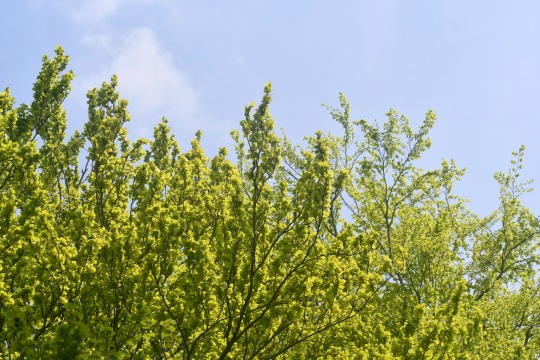
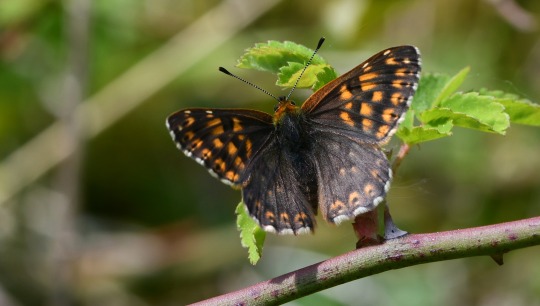
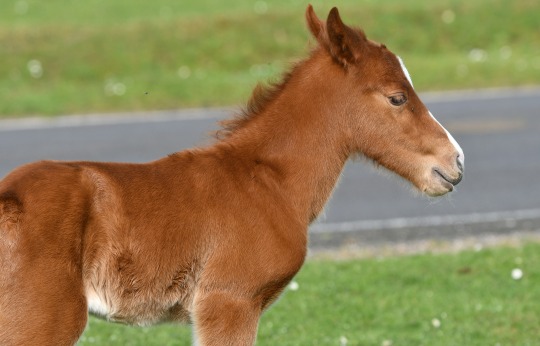
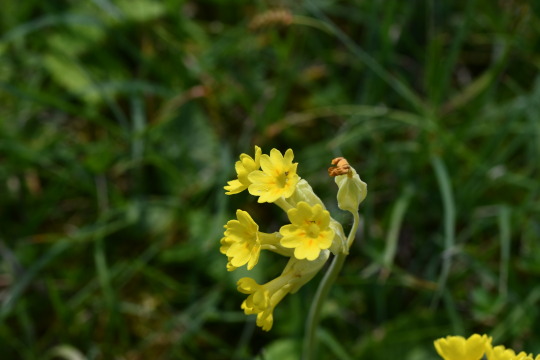
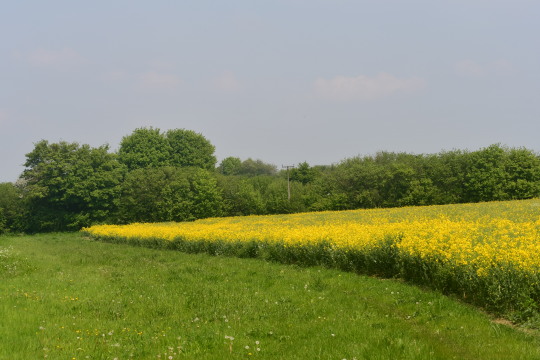

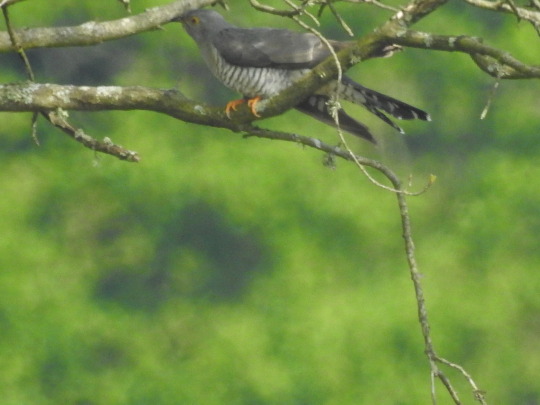
11/05/2024-View and gorgeous Duke of Burgundy butterfly at Noar Hill, one of two adorable New Forest Pony foals seen at Stoney Cross this evening, cowslips and a yellow field of oilseed rape at Noar Hill, rhododendron in the garden and an amazing Cuckoo at Fritham in the New Forest on a sensational and packed spring day of wildlife watching.
I also saw my first Dingy Skipper, Mint moth, Burnet Companion moth and Beautiful Demoiselle of the year at Noar Hill and my first Brown Silver-line and Common Heath moths and Broad-bodied Chaser dragonflies of the year at Fritham. Other highlights across the day included Red Kite, three Buzzards at Fritham, Blackcaps heard, House Martins seen well over and around a pond at Fritham, Linnet, Red Admiral, Peacock, Speckled Wood, Holly Blue, Common Blue Damselfly, bright red Cardinal beetle, lousewort, my first ever common twayblade, early purple orchid and eyebright.
#cuckoo#duke of burgundy#dingy skipper#photography#birdwatching#2024#outdoors#happy#walking#saturday#weekend#may#new forest#noar hill#fritham#sunny#warm#broad-bodied chaser#butterflies#moths#dragonflies#flowers#cardinal beetle#beetles#europe
4 notes
·
View notes
Photo





The Dawn Chorus The wail of Red throated divers and the piping of common sandpipers heralded a gorgeous pink and purple sunrise on the first Birdsong & Breakfast walk this morning. Curlews were ‘curlewing’ further along the shore, and a pair of Eiders added their Frankie Howerd “Owooooo” calls to the chorus as we gathered outside the bunkhouse at 5am in the pink dawn light. We headed off along the shore, then into the woodland at the back of the castle, where chaffinch, robin, wren, great tit, chiffchaff, willow warbler and goldcrest all clamoured from the treetops as we negotiated mud and tree roots beneath them. I played a blackcap recording under the trees, but there was no answer. Many summer breeders are late this year due to the delayed spring. Past the powerhouse, the track took us around the back of the old walled garden with woodland on both sides. Blackbird, song thrush and cuckoo were added to the list, with the cuckoo sounding tantalisingly close, yet never visible. On the trail of the grasshopper warbler I heard last week, we headed for Croft 3 and the North Side Trail, clocking up blue tit and meadow pipit on the way. I nearly missed it, but the grasshopper warbler was singing its fishing reel song not far from the Croft 3 craft shed, exactly where I’d heard it before. It sang in short, quiet bursts though, not the loud, extended churr of last week, so unfortunately, not everyone got to hear it. Walking along the bottom of the croft, we heard a distinctive gobble from the other side of the fence. The male turkey raised his tail feathers and treated us to a display, while ravens gronked overhead and chased some hooded crows up into the air. Coal tits and redpolls joined the list as we looped up onto the top path above the croftland. Beautiful Scottish black-moss grows along the fault lines of a sandstone outcrop here, looking like an abstract painting, while down in the grass, we saw flowering patches of milkwort, dog violet, lousewort and butterwort. A high-flying heron caused momentary excitement, as we thought it was an eagle until we got the binoculars on it, but a showy, singing willow warbler made up for it. The bird-cherry trees were in blossom, and marsh marigold and cuckoo flowers bloomed in the wet meadow. As we approached the end of the walk, a greyish bird flew out of the trees by the SNH agricultural shed. I managed to get the binoculars on it, thinking it was probably just a wood pigeon. It circled the shed and remained in the open long enough for everyone to spot that it was a cuckoo on the wing! At breakfast in the hall, whilst devouring bacon rolls, we wrote down everything we’d seen – we clocked up 25x species of bird, plus 3x domestic species (cockerel, turkey, goose) and 9x interesting plants. A very successful first Birdsong & Breakfast walk: it was well worth getting out of bed at 4.30am! Trudi Clarke Ranger Isle of Rum May 2018
0 notes
Photo

062-Crested Cow-Wheat, Purple Cow-Wheat, Common Yellow Cow-Wheat, Lesser flowered Yellow Cow-Wheat, Marsh Lousewort, Pasture Lousewort, melampyrum cristatum, melampyrum arvense, me - high resolution image from old book.
0 notes
Text
New Post has been published on Biology Dictionary
New Post has been published on https://biologydictionary.net/tundra-biotic-factors/
Tundra Biotic Factors
The tundra is a biome that does not have many trees because of short growing seasons and low temperatures. The three types of tundra on the Earth are the Arctic tundra, alpine tundra and Antarctic tundra. There are a variety of biotic factors that are characteristic of each type of tundra. Various bacteria and fungi are important biotic factors that are common in all tundra biomes.
Arctic Tundra
Polar bears are one of the most recognizable animals on the Arctic tundra. Other animals include the Arctic fox, the Arctic wolf, reindeer, musk ox, seals, the Arctic hare, the snowy owl and lemmings that live underneath the snow. Peat soils, cotton grass, rushes and mosses like Sphagnum are typical of this area as are willow trees and sunflowers. There are some species of Arctic insects like black flies and mosquitos as well as spiders that have evolved and adapted to the freezing conditions.
The image above shows a mother polar bear Ursus maritimus with her offspring. Polar bears live in the Arctic tundra within the Arctic Circle.
Alpine Tundra
Resident mammals in the alpine tundra include mountain sheep, mountain goats, ibex, chamois, wildcats, marmots, ground squirrels, jumping mice, pikas, rabbits and birds like the snow goose, the ptarmigan and owls. The alpine tundra has few, if any, trees because the altitude and soils do not support their growth. The few spruce, fir, pine and willow that live in the transitional area (about 330 feet higher than the lower forest areas) are stunted in their growth and scattered around. Other plants in the alpine tundra are cotton grass, lousewort and various shrubs. Alpine insects include black flies and mosquitos.
The image above shows the alpine tundra area of Glarus, Switzerland.
Antarctic Tundra
Seals are one of the few mammals that live on the Antarctic tundra due to the physical isolation of the area that has occurred over millions of years. Adélie and Emperor penguins and seabirds like petrels, terns and gulls populate the area. Survival is challenging for plants on the Antarctic tundra, but there are close to 400 species of lichens, 25 liverworts, 100 mosses, about 700 species of algae and two species of flowering plants (Antarctic hair grass and Antarctic pearlwort) that have adapted to live in the rockier areas of the biome. The Antarctic midge is the only insect that lives on the continent.
The image above shows Emperor Penguins Aptenodytes forsteri on the Antarctic tundra.
References
Tundra. (n.d.). In Wikipedia. Retrieved July 11, 2017 from https://en.wikipedia.org/wiki/Tundra
Tundra. (2017, July 11). In Encyclopedia Britannica online. Retrieved from https://www.britannica.com/science/tundra
0 notes
Text
Pedicularis
the common lousewort has a magical power humble mountain herb camouflaged in shades of leaves and beautiful curved flowers
Kim M. Russell, 2017
Image found on Pinterest
My response to Carpe Diem #1203 Pedicularis
In today’s episode of CDHK we are looking again at the alternative health care of Tibet. Chèvrefeuille tells us that the Tibetans have a very strong knowledge of natural medicines.…
View On WordPress
0 notes